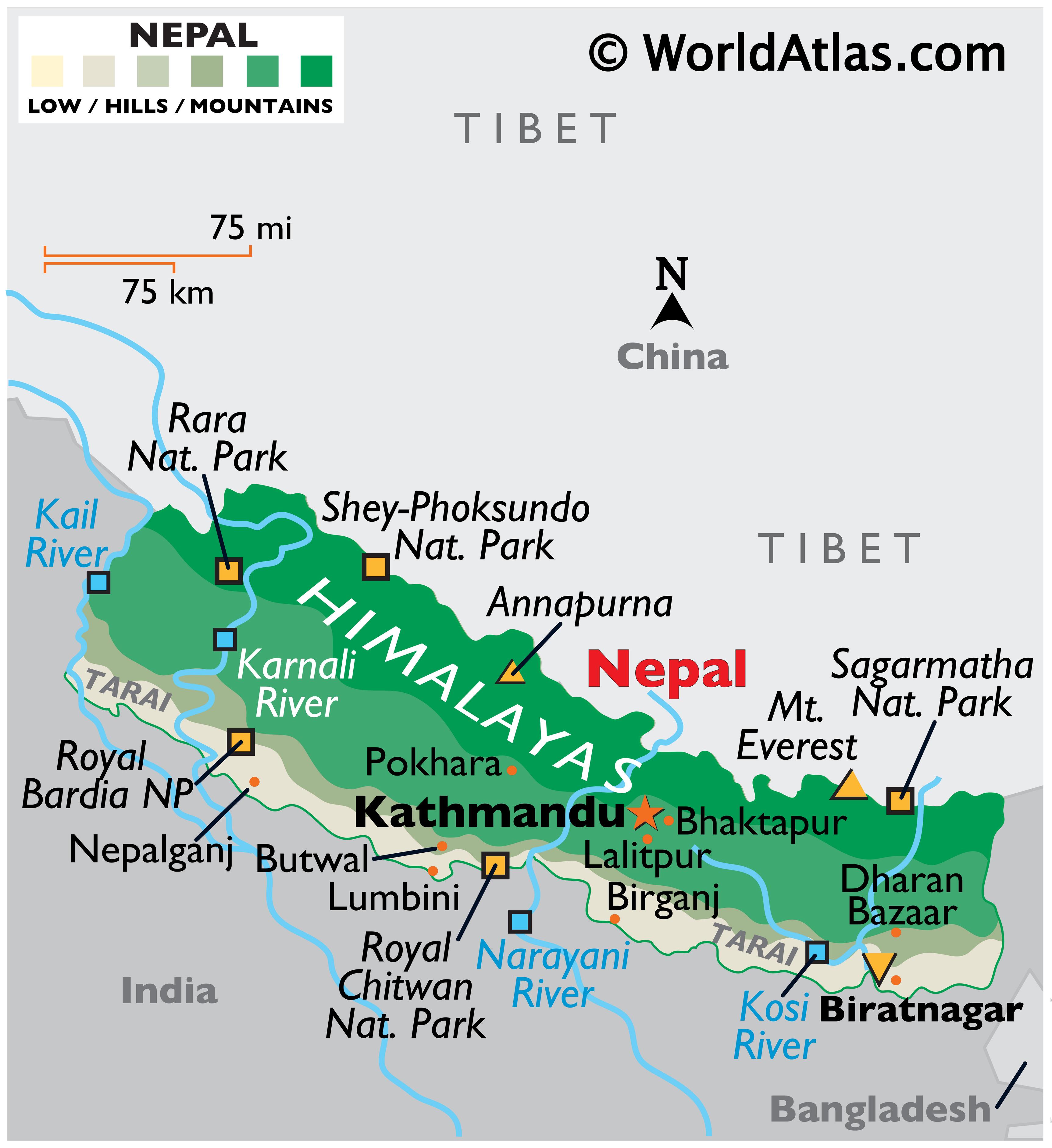Nepal, a country of amazing extremes is the home of the world’s highest mountains, historic cities and the forested plains where the regal tigers and the armor plated greater onehorned rhinoceros trundle at ease.
Situated in South Asia and surrounded by the Tibetan Autonomous Region of China in the north and by India in the south, east and west, the Kingdom of Nepal covers an area of 147,181 sq. km (between 80° 4’ and 88° 12’ East and 26° 22’ and 30° 27’ North). The length of the Kingdom is 885 kilometers east to west, and varies between 145 to 241 kilometers north to south.
It represents a transitional zone of two bio-geographical realms: the Paleartic and the Indo-Himalayan. It is also at the crossroads of the Southeast Asian, Northeast Asian (Chinese) and Mediterranean tracts. Nepal can be divided broadly into three ecological zones: the lowland (Terai), the mid-hills and the high mountains.
The altitude of the Himalayan region ranges between 4,877 m. to 8,848 m. It includes eight of the highest 14 summits in the world, which exceed an altitude of 8,000 meters including the world highest mountain Sagarmatha (Mount Everest).It represents a transitional zone of two bio-geographical realms: the Palearctic and the Indo-Himalayan. It is also at the crossroads of the Southeast Asian, Northeast Asian (Chinese) and Mediterranean tracts. Nepal can be divided broadly into three ecological zones: the lowland (Terai), the mid-hills and the high mountains.
Kathmandu
Kathmandu is the largest and capital city of Nepal and the namesake of the Kathmandu valley. Once thought to be fabled and inaccessible Shangri-La, Kathmandu is now a hun for independent travelers as well as a growing vacation spot catering to all budgets. As a result of considerable urban growth in recent decades, it is now part of one continuous urban are together with Patan to the south.


